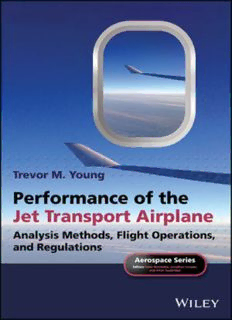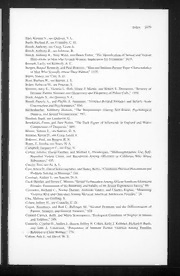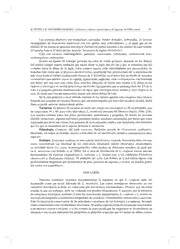
Hybrid Modeling and Optimization of Manufacturing: Combining Artificial Intelligence and Finite Element Method PDF
Preview Hybrid Modeling and Optimization of Manufacturing: Combining Artificial Intelligence and Finite Element Method
SpringerBriefs in Applied Sciences and Technology Computational Mechanics For furthervolumes: http://www.springer.com/series/8886 Ramón Quiza Omar López-Armas • J. Paulo Davim Hybrid Modeling and Optimization of Manufacturing Combining Artificial Intelligence and Finite Element Method 123 Ramón Quiza J.Paulo Davim Department of Mechanical Engineering Department of Mechanical Engineering Universityof Matanzas Universityof Aveiro Autopista aVaradero Campus Santiago 44740Matanzas 3810-193Aveiro Cuba Portugal OmarLópez-Armas Department of Mechanical Engineering Universityof Matanzas Autopista aVaradero, km 3(cid:2) 44740Matanzas Cuba ISSN 2191-5342 e-ISSN2191-5350 ISBN 978-3-642-28084-9 e-ISBN978-3-642-28085-6 DOI 10.1007/978-3-642-28085-6 SpringerHeidelbergNewYorkDordrechtLondon LibraryofCongressControlNumber:2012931420 (cid:2)TheAuthor(s)2012 Thisworkissubjecttocopyright.AllrightsarereservedbythePublisher,whetherthewholeorpartof the material is concerned, specifically the rights of translation, reprinting, reuse of illustrations, recitation,broadcasting,reproductiononmicrofilmsorinanyotherphysicalway,andtransmissionor informationstorageandretrieval,electronicadaptation,computersoftware,orbysimilarordissimilar methodology now known or hereafter developed. Exempted from this legal reservation are brief excerpts in connection with reviews or scholarly analysis or material supplied specifically for thepurposeofbeingenteredandexecutedonacomputersystem,forexclusiveusebythepurchaserof thework.Duplicationofthispublicationorpartsthereofispermittedonlyundertheprovisionsofthe CopyrightLawofthePublisher’slocation,initscurrentversion,andpermissionforusemustalwaysbe obtained from Springer. Permissions for use may be obtained through RightsLink at the Copyright ClearanceCenter.ViolationsareliabletoprosecutionundertherespectiveCopyrightLaw. The use of general descriptive names, registered names, trademarks, service marks, etc. in this publicationdoesnotimply,evenintheabsenceofaspecificstatement,thatsuchnamesareexempt fromtherelevantprotectivelawsandregulationsandthereforefreeforgeneraluse. While the advice and information in this book are believed to be true and accurate at the date of publication,neithertheauthorsnortheeditorsnorthepublishercanacceptanylegalresponsibilityfor anyerrorsoromissionsthatmaybemade.Thepublishermakesnowarranty,expressorimplied,with respecttothematerialcontainedherein. Printedonacid-freepaper SpringerispartofSpringerScience+BusinessMedia(www.springer.com) Preface Neither the finite element method nor the artificial intelligence are new tools in modeling and optimization of manufacturing processes. A big amount of infor- mationonthesetopicscanbefoundinthespecializedliterature.Nevertheless,the combinationofbothapproachesinnotasoldandwidespread.Onlyinrecentyears, this approach is beginning to receive a noticeable attention from the research community. Combining the capability of the finite element method for computing good approximate solutions of partial differential equations defined on geometrically complicated domains with the advantages of artificial intelligence-based techniques for mapping nonlinear noisy relationships and for obtaining near- optimal solutions in complex problems, results in a more powerful and flexible tool. This hybrid approach has been used for solving some problems in manu- facturing modeling and optimization, but it is currently in its birth. It can be undoubtedlyexpectedthat,inthenextyears,thegrowingoftheprocessingpower ofcomputerstogetherwiththedevelopmentofnewmoreefficientmethodsinboth areas, increase the efficacy and efficiency of this methodology. The main objective of this text is to expose some conceptual ideas on the integration of the finite element method and artificial intelligence tool for solving modelingandoptimizationproblemsinthefieldofmanufacturingprocesses.Also, themaintopicsonbothtoolsareexplainedandanillustrativesampleoftheuseof the hybrid approach is presented. The book is directed to the research community dedicated to the mathematical modeling and optimization of manufacturing processes. It is intended to be employed at postgraduate level but some of its topics can be used also in under- graduate courses. As in every work, the contribution of many people played an important role. However, we want to highlight the support of our college Professor Marcelino v vi Preface Rivas,throughalltheprocessesofconceivingandwritingofthebook.Hisadvises and suggestions were actually invaluable for this work. R. Quiza O. López-Armas J. P. Davim Contents 1 Introduction . . . . . . . . . . . . . . . . . . . . . . . . . . . . . . . . . . . . . . . . 1 1.1 Relevance and Convenience of Hybrid Modeling and Optimization of Manufacturing Processes. . . . . . . . . . . . . . 1 1.2 Approaches for Combining AI and FEM . . . . . . . . . . . . . . . . . 4 1.2.1 FEM/AI Models . . . . . . . . . . . . . . . . . . . . . . . . . . . . . 4 1.2.2 AI/FEM Models . . . . . . . . . . . . . . . . . . . . . . . . . . . . . 5 1.2.3 Hybrid Approaches for Optimization. . . . . . . . . . . . . . . 6 1.2.4 Fuzzy FEM . . . . . . . . . . . . . . . . . . . . . . . . . . . . . . . . 8 References . . . . . . . . . . . . . . . . . . . . . . . . . . . . . . . . . . . . . . . . . . 9 2 Finite Element in Manufacturing Processes. . . . . . . . . . . . . . . . . . 13 2.1 Basis of the Finite Element Method. . . . . . . . . . . . . . . . . . . . . 13 2.2 FEM for Linear Elastostatic Problems . . . . . . . . . . . . . . . . . . . 16 2.3 FEM for Plasticity. . . . . . . . . . . . . . . . . . . . . . . . . . . . . . . . . 20 2.3.1 Plasticity Fundamentals. . . . . . . . . . . . . . . . . . . . . . . . 20 2.3.2 Material Behavior Models . . . . . . . . . . . . . . . . . . . . . . 21 2.3.3 Yielding Criteria. . . . . . . . . . . . . . . . . . . . . . . . . . . . . 24 2.3.4 Governing Equations. . . . . . . . . . . . . . . . . . . . . . . . . . 24 2.3.5 FEM Formulation. . . . . . . . . . . . . . . . . . . . . . . . . . . . 29 2.4 Thermal Analysis . . . . . . . . . . . . . . . . . . . . . . . . . . . . . . . . . 30 2.5 Friction Models. . . . . . . . . . . . . . . . . . . . . . . . . . . . . . . . . . . 31 2.6 Fracture . . . . . . . . . . . . . . . . . . . . . . . . . . . . . . . . . . . . . . . . 33 References . . . . . . . . . . . . . . . . . . . . . . . . . . . . . . . . . . . . . . . . . . 36 3 Artificial Intelligence Tools. . . . . . . . . . . . . . . . . . . . . . . . . . . . . . 39 3.1 Preliminary Concepts. . . . . . . . . . . . . . . . . . . . . . . . . . . . . . . 39 3.2 Artificial Neural Networks . . . . . . . . . . . . . . . . . . . . . . . . . . . 40 3.2.1 Biological Foundations and Neuron Model. . . . . . . . . . . 40 3.2.2 Network Topology and Learning . . . . . . . . . . . . . . . . . 41 3.2.3 Multilayer Perceptron . . . . . . . . . . . . . . . . . . . . . . . . . 43 vii viii Contents 3.2.4 Radial Basis Function Networks. . . . . . . . . . . . . . . . . . 46 3.2.5 Hopfield Networks . . . . . . . . . . . . . . . . . . . . . . . . . . . 49 3.2.6 Adaptive Resonance Theory and Self-Organizing Maps . . . . . . . . . . . . . . . . . . . . . . 51 3.2.7 Warnings and Shortcomings in the Use of Neural Networks. . . . . . . . . . . . . . . . . . . . . . . . . . . 56 3.3 Fuzzy Logic . . . . . . . . . . . . . . . . . . . . . . . . . . . . . . . . . . . . . 58 3.4 Neuro-Fuzzy Systems. . . . . . . . . . . . . . . . . . . . . . . . . . . . . . . 61 3.5 Metaheuristic Optimization. . . . . . . . . . . . . . . . . . . . . . . . . . . 64 3.5.1 Optimization Basis . . . . . . . . . . . . . . . . . . . . . . . . . . . 64 3.5.2 Evolutionary Computation . . . . . . . . . . . . . . . . . . . . . . 66 3.5.3 Evolutionary Multi-Objective Optimization . . . . . . . . . . 68 3.5.4 Swarm Intelligence . . . . . . . . . . . . . . . . . . . . . . . . . . . 71 References . . . . . . . . . . . . . . . . . . . . . . . . . . . . . . . . . . . . . . . . . . 76 4 Case of Study . . . . . . . . . . . . . . . . . . . . . . . . . . . . . . . . . . . . . . . 79 4.1 Case Description. . . . . . . . . . . . . . . . . . . . . . . . . . . . . . . . . . 79 4.2 Finite Element Method Based Modeling. . . . . . . . . . . . . . . . . . 79 4.2.1 Model Description. . . . . . . . . . . . . . . . . . . . . . . . . . . . 79 4.2.2 Outcomes of the FEM. . . . . . . . . . . . . . . . . . . . . . . . . 80 4.3 Empirical Modeling. . . . . . . . . . . . . . . . . . . . . . . . . . . . . . . . 85 4.3.1 Statistical Modeling. . . . . . . . . . . . . . . . . . . . . . . . . . . 85 4.3.2 Neural Network-Based Modeling . . . . . . . . . . . . . . . . . 86 4.4 Optimization. . . . . . . . . . . . . . . . . . . . . . . . . . . . . . . . . . . . . 89 4.5 Concluding Remarks . . . . . . . . . . . . . . . . . . . . . . . . . . . . . . . 91 References . . . . . . . . . . . . . . . . . . . . . . . . . . . . . . . . . . . . . . . . . . 91 Index . . . . . . . . . . . . . . . . . . . . . . . . . . . . . . . . . . . . . . . . . . . . . . . . 93 Chapter 1 Introduction Abstract This chapter begins with an explanation about the importance of modelingandoptimizationofmanufacturingprocessesnotonlyfromthescientific andresearchingpointofviewbutalsoforpracticalindustrialapplications.Thenit introduces the hybrid approach which combines artificial intelligence tools and finite element method for these modeling and optimization tasks. The advantages and shortcomings of each of these techniques are exposed, highlighting the con- venience of combining both methods, increasing the robustness and flexibility. Furthermore, the different approaches for combining artificial intelligence and finiteelementmethodinmodelingandoptimizationofmanufacturedprocessesare outlined and preliminarily evaluated. 1.1 Relevance and Convenience of Hybrid Modeling and Optimization of Manufacturing Processes Modeling of the physical phenomena involved in manufacturing processes (machining, forming, foundry, etc.) has been recognized as one of the most important tasks in manufacturing research. Accurate and realistic mathematical models not only allow understanding how these phenomena take place, but also facilitate the development of new manufacturing processes. Knowledge about the quantitative relationships between the different parame- ters involved in manufacturing processes also permits the implementation of effective monitoring and control system, which are indispensable in the high automated modern industry. Moreover, the use of highly optimized manufacturing processes is widely accepted as a necessary condition for achieving effectiveness, efficiency and economic competitiveness in manufacturing workshops. R.Quizaetal.,HybridModelingandOptimizationofManufacturing, 1 SpringerBriefsinComputationalMechanics, DOI:10.1007/978-3-642-28085-6_1,(cid:2)TheAuthor(s)2012 2 1 Introduction Fig.1.1 Classificationofmodelingtechniques Unfortunately, the physical nature of the phenomena underlying the manufac- turing processes is not easy to understand, as they involve complex nonlinear relationshipswhicharenocompletelyexplaineduptodate.Thissituationworsens withtheuseofmodernmaterialsforpartsandtools.Forexample,formanyyears, the tool life of high speed steels cutting tools, working at relatively low speeds, was described by the well-known Taylor’s law (Childs et al. 2000) with an acceptable error level. However, the introduction of multi-coated carbides and PCBNtools,athighcuttingspeedsandhardconditionshasmadetheTaylor’slaw useless or, at less, extremely limited (Dolinšek et al. 2001). Two main approaches can be used in modeling manufacturing processes (see Fig. 1.1). On one hand, the phenomenological modeling is based on the identification and mathematical description of the physical phenomena. It has the advantage of being more realistic and accurate. Also they help to understand the mechanisms of these phenomena. This mathematical description comes in the formofexpressions,usuallydifferentialequationswhichcanbesolveanalytically only for a limited set of simple problems. For most of the real problems, these equations (especially partial differential equations) have not analytical solutions and approximated numerical solutions must be obtained instead. Between the numerical methods used for solving partial differential equation, the finite element method (FEM) has reach the higher application levels, because of its ability for being applied to problems defined over complex spatial domains and the relative simplicity of its computational implementation (Dixit and Dixit 2008). FEM has been successfully applied to a wide variety of manufacturing processes, such as machining (Arrazola and Özel 2010; Mamalis et al. 2008), forming (Gudur and Dixit 2008; Shahani et al. 2009), welding (Anca et al. 2011) and foundry (Lewis et al. 2005). Sometimes, the phenomenological models are too much idealized for giving results accurate enough for being used in practical applications. In these cases, empirical models, based on correlation of experimental data, play a crucial role. The main drawback of this kind of models is its incapability for identifying or explaining the physical relationship between the involved variables. However, they usually offer accurate outcomes for industrial applications and had been widely used in optimization of manufacturing processes. Traditionally, the mathematical techniques used for correlating data in empir- ical models were those based on statistics. These tools are quite simple and are 1.1 RelevanceandConvenienceofHybridModeling 3 supported by a well-developed theory. Furthermore, there is a lot of computer software allowing the applications of a wide variety of statistical techniques. Statistical-basedempiricalmodelshasbeensuccessfullyusedthroughthetime, from the first reported work in manufacturing modeling and optimization (Taylor 1907) to very recent papers in this field (Sahin and Motorcu 2008; Palanisamy et al. 2007). Nevertheless, the introduction of new materials, such as composites, ceramics and coated carbides) and the use of high work conditions (high cutting speed, in machining, or high deformation rates, in forming, for example) have shown the shortcoming of the statistical techniques. The relationships between different variables, in the new conditions, are commonly too complex for being properly described by a single regression equation. Some artificial intelligence (AI) techniques, such as artificial neural networks andsupportvectormachines,hasprovedbeingeffectiveinmatchingcomplexand noisy relationships, and has been widely applied in modeling of manufacturing process (Singha and Gupta 2010; Kolodziejczyk et al. 2010; Wang et al. 2008). Furthermore,uncertaintyhasbeenrecognizedastakingplaceinthedescription of the complex phenomena involved in mechanical manufacturing processes. Here,someAItechniques,suchasfuzzylogic,canbeavaluabletool(Ching-Kao andLu2007;Manabeetal.2006).Combiningneuralnetworksandfuzzylogicin neuro-fuzzy systems, often results in a more powerful and versatile approach, which is also used in modeling of manufacturing processes (Dutta et al. 2006; Coutinho and Marinescu 2005). On the other hand, AI techniques have application not only in the field of modeling but also in the optimization of manufacturing processes. Due to the complexityofinvolvedrelationships,whichplaytheroleofobjectivefunctionand constraints, in the optimization problem, conditions such as continuity, differen- tiability and unimodality cannot be guaranteed; therefore, the applicability of numeric optimization techniques, in these cases, is often very limited. On the contrary, heuristic optimization techniques, such as evolutionary algo- rithms, ant-colony algorithm and simulated annealing have been reported as successful in dealing with this kind of problems (Chandrasekaran et al. 2010). ThemaindrawbackoftheapplicationofAItechniquesinmodelingistheneed oflargedatasetsinordertocarryoutthetrainingprocess(QuizaandDavim2011). Furthermore,thetheorysupportingtheseapproachesisnotaswelldevelopedasin statistics,sometimestheynotareappliedwithallthecareandmathematicalrigor they require (Sha and Edwards 2007). Combining both approach, i.e. FEM and AI-based techniques, can result in a morepowerfulandflexibleapproach. Someattemptshadbeendoneinthissense, in several branches of the manufacturing processes modeling and optimization (Fu et al. 2010; Chan et al. 2008; Umbrello et al. 2008). In the following pages, some theoretical background on this approach is presented, combined with a lit- erature review. Finally, an application sample is presented in order to illustrate how this hybrid approach works.
The list of books you might like

Atomic Habits James Clear

The Sweetest Oblivion (Made Book 1)

$100m Offers

The 48 Laws of Power
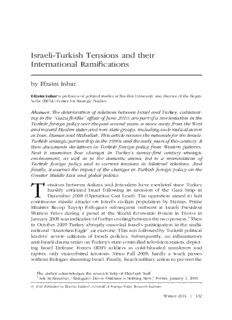
Israeli-Turkish Tensions and their International Ramifications

CAUT Bulletin December 2006 (Volume 53, Number 10)
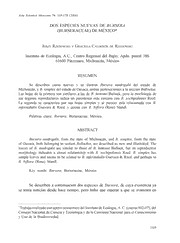
DOS ESPECIES NUEVAS DE BURSERA (BURSERACEAE) DE MÉXICO

Sonic the Hedgehog #37
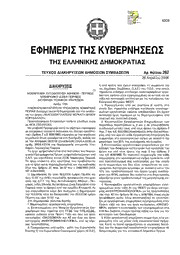
Greek Government Gazette: Part 7, 2006 no. 262

Apprenticeship and training program biennial report for ...
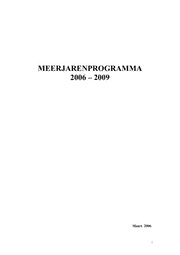
Meerjarenprogramma 2006-2009
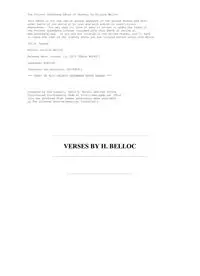
Verses by Hilaire Belloc

C anton (Extorter
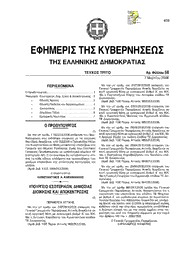
Greek Government Gazette: Part 3, 2006 no. 58
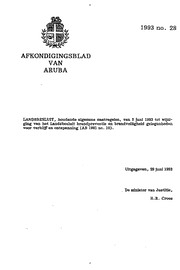
Afkondigingsblad van Aruba 1993 no. 28

Web Mobile & Web Mobile hybride

Asia Bond Monitor—September 2017
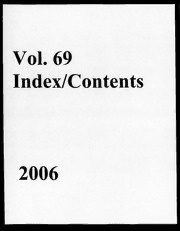
Resuscitation 2006: Vol 69 Index

Calderdale: Integrating Intermediate Tier Services
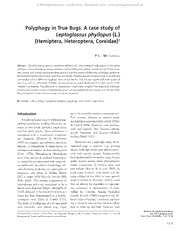
Polyphagy in True Bugs: A case study of Leptoglossus phyllopus (L.) (Hemiptera, Heteroptera, Coreidae)
